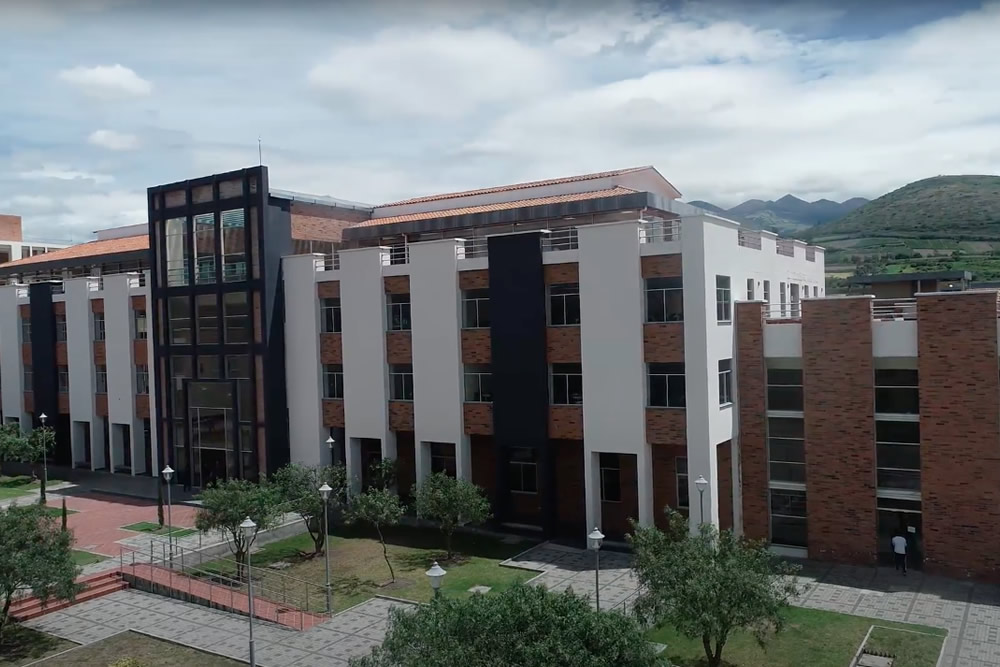Introduction to optical mineralogy / William D. Nesse.
Tipo de material: TextoIdioma: eng. Detalles de publicación: New York : Oxford ; 2013.Edición: 4th edDescripción: xiii, 361 p. : illustration (some colours.) ; 24 cmISBN:
TextoIdioma: eng. Detalles de publicación: New York : Oxford ; 2013.Edición: 4th edDescripción: xiii, 361 p. : illustration (some colours.) ; 24 cmISBN: - 9780199846276 (hbk. : alk. paper)
- 9780199846283
- Optical mineralogy
- 549.125 23
- QE369.O6 N47 2013
- SCI048000 | SCI031000 | SCI019000
| Tipo de ítem | Biblioteca actual | Signatura | Copia número | Estado | Fecha de vencimiento | Código de barras | Reserva de ítems | |
|---|---|---|---|---|---|---|---|---|
 Colección general
Colección general
|
Biblioteca Yachay Tech | 549.125 N463 2013 (Navegar estantería(Abre debajo)) | Ej. 1 | Disponible | 004219 |
Navegando Biblioteca Yachay Tech estanterías Cerrar el navegador de estanterías (Oculta el navegador de estanterías)

|

|

|

|
No hay imagen de cubierta disponible | No hay imagen de cubierta disponible | No hay imagen de cubierta disponible | ||
| 549 N463i 2012 Introduction to mineralogy / | 549.028 P8951o 2015 The ore minerals under the microscope : | 549.114 B2551k 2014 A key for identification of rock-forming minerals in thin section / | 549.125 N463 2013 Introduction to optical mineralogy / | 549.125 R412e 1999 Elementos de mineralogía óptica : | 549.125 R412e 1999 Elementos de mineralogía óptica : | 549.125 R412e 1999 Elementos de mineralogía óptica : |
Includes index and appendix.
Machine generated contents note: -- Table of Contents -- Preface xi -- Chapter 1: Light 1 -- The Nature of Light 1 -- Electromagnetic Radiation 1 -- Phase 3 -- The Perception of Color 4 -- Interaction of Light and Matter 5 -- Transmitted Light 5 -- Velocity 5 -- Index of Refraction 5 -- Reflection 7 -- Critical Angle and Total Internal Reflection 7 -- Optical Class 8 -- Dispersion 9 -- Optical Indicatrix 9 -- Light Absorption and Color 10 -- Polarized Light 10 -- Polarization by Double Refraction 11 -- Polarization by Reflection 12 -- Polarization by Scattering 13 -- Chapter 2: The Petrographic Microscope 14 -- Direction Conventions 14 -- Samples 14 -- Illuminator 15 -- Substage Assembly 16 -- Microscope Stage 17 -- Objective Lenses 17 -- Vertical Illuminator 18 -- Upper Polarizer 18 -- Bertrand Lens 19 -- Ocular 19 -- Focusing Mechanism 19 -- Accessories 20 -- Additional Equipment 20 -- General Care of the Microscope 21 -- Adjustment of the Microscope 21 -- Adjusting the Oculars 21 -- Focusing 22 -- Adjusting the Illuminator 22 -- Centering the Objectives 22 -- Adjusting the Substage 23 -- Alignment of Polarizers 23 -- General Considerations 24 -- Chapter 3: Refractometry 25 -- Relief 25 -- Becke Line Method 25 -- Dispersion Effects 28 -- Oblique Illumination Method 30 -- Practical Considerations 31 -- Accuracy of the Immersion Method 32 -- Determining Indices of Refraction in Thin Section 33 -- Chapter 4: Optics of Isotropic Materials 34 -- Isotropic Indicatrix 34 -- Distinguishing Between Isotropic and Anisotropic Minerals 34 -- Indentification of Isotropic Minerals 34 -- Grain Mount 35 -- Thin Section 36 -- Chapter 5: Optics of Anisotropic Minerals: Introduction 37 -- Interference Phenomena 39 -- Monocromatic Illumination 39 -- Retardation 39 -- Birefringence 40 -- Interference of the Two Rays 40 -- Polychromatic Illumination 41 -- Orders of Interference Colors 43 -- Anomalous Interference Colors 43 -- Determining Thickness of a Sample 43 -- Thin Section 43 -- Grain Mount 44 -- Determining Birefringence from the Color Chart 45 -- Thin Section 45 -- Grain Mount 45 -- Recognizing the Different Orders of Interference Colors 45 -- Extinction 45 -- Categories of Extinction 46 -- Use of the Accessory Plates 47 -- Sign of Elongation 50 -- Relief 51 -- Pleochroism 51 -- Chapter 6: Uniaxial Optics 53 -- Optic Sign 53 -- Crystallographic Considerations 54 -- Uniaxial Indicatrix 55 -- Use of the Indicatrix 56 -- Birefringence and Interference Colors 58 -- Extinction 60 -- Tetragonal Minerals 61 -- Hexagonal Minerals 61 -- Rhombohedral Cleavage 61 -- Prismatic and Pinacoidal Cleavage 61 -- Pleochroism 64 -- Interference Figure 65 -- Optic Axis Interference Figure 65 -- Formation of Isochromes 66 -- Formation of Isogyres 67 -- Determining Optic Sign 67 -- Off-Center Optic Axis Figure 69 -- Flash Figure 69 -- Selecting Grains to Give Interference Figures 72 -- Optic Axis Figure 72 -- Flash Figure 72 -- Determining Indices of Refraction 72 -- Grain Mount 72 -- Determining n? 72 -- Determining n? 73 -- Thin Section 74 -- Spindle Stage 74 -- Chapter 7: Biaxial Optics 76 -- Biaxial Indicatrix 76 -- Mathematical Relationships 78 -- Use of the Indicatrix 79 -- Normal Incidence Parallel to an Indicatrix Axis 81 -- Normal Incidence Parallel to an Optic Axis 81 -- Normal Indicidence in a Random Direction 82 -- Inclined Incidence 82 -- Crystallographic Orientation of Indicatrix Axes 83 -- Orthorhombic Minerals 83 -- Monoclinic Minerals 84 -- Triclinic Minerals 84 -- Biaxial Interference Figure 84 -- Acute Bisectrix Figure 85 -- Formation of Isochromes 85 -- Vibration Directions and Formation of Isogyres 86 -- Centered Optic Axis Figure 88 -- Obtuse Bisectrix Figure 89 -- Optic Normal Figure 89 -- Off-Center Figures 90 -- Determining Optic Sign 91 -- Acute Bisectrix Figure 91 -- Obtuse Bisectrix Figure 94 -- Optic Axis Figure 91 -- Flash Figures 91 -- Determining 2V 95 -- 2V Versus 2E 95 -- Mallard's Method 95 -- Tobi's Method 96 -- Kamb's Method 97 -- Wright Method 98 -- Selecting Grains to Produce Interference Figures 99 -- Pleochroism 101 -- Extinction 101 -- Orthorhombc Minerals 101 -- Monoclinic Minerals 102 -- Triclinic Minerals 103 -- Sign of Elongation 103 -- Indices of Refraction 104 -- Grain Mount 104 -- Spindle Stage 104 -- Dispersion in Biaxial Minerals 106 -- Orthorhombic Minerals 106 -- Monoclinic Minerals 107 -- Triclinic Minerals 108 -- Chapter 8: Reflected Light Optics 110 -- Physical Properties Observed with Polished Sections 110 -- Crystal Form and Habit 110 -- Hardness 111 -- Observation in Plane Polarized Light 114 -- Reflectance 114 -- Bireflectance 115 -- Measurement of Reflectance and Bireflectance 116 -- Color and Pleochroism 117 -- Isotropic Minerals 117 -- Anisotropic Minerals 117 -- Observations with Crossed Polarizers 118 -- Polarization Colors 118 -- Isotropic Minerals 118 -- Anisotropic Minerals 118 -- Internal Reflections 119 -- Observations Related to Conoscopic Illumination 120 -- Practical Considerations 120 -- Chapter 9: Indentification of Minerals 122 -- Descriptive Features 122 -- Cleavage 122 -- Twinning 122 -- Alteration 123 -- Association 123 -- Tactics for Mineral Identification 123 -- Thin Section Identification 123 -- Grain Mount Identification 124 -- Polished Section Identification 125 -- Use of the Identification Tables 125 -- Nonminerals 126 -- Problems in Paradise 126 -- Inconsistencies in Crystallographic Settings 127 -- Poor Data 127 -- Chapter 10: Framework Silicates 128 -- Silica Group 128 -- Quartz 128 -- Chalcedony 128 -- Tridymite 131 -- Cristobalite 132 -- Opal 132 -- Volcanic Glass 133 -- Feldspars 134 -- Plagioclase 135 -- Thin Section 138 -- Grain Mount 142 -- Alkali Feldspars 144 -- Sanidine 148 -- Orthoclase 149 -- Microcline 150 -- Adularia 150 -- Anorthoclase 151 -- Feldspathoids 151 -- Nepheline 151 -- Sodalite Group 153 -- Leucite 153 -- Cancrinite-Vishnevite 154 -- Zeolites 155 -- Analcime (Analcite) 156 -- Natrolite 157 -- Thomsonite 158 -- Stilbite 159 -- Chabazite 159 -- Heulandite 160 -- Laumondite 161 -- Other Minerals and Mineraloids 162 -- Scapolite 162 -- Chapter 11: Sheet Silicates 164 -- TO Layer Silicates 166 -- Kaolinite 166 -- Serpentine 166 -- TOT Layer Silicates 167 -- Pyrophyllite 167 -- Talc 168 -- TOT + Interlayer Cation Layer Silicates 169 -- Muscovite 169 -- Biotite 171 -- Lepidolite 173 -- Glauconite 174 -- Margarite 175 -- Clintonite 175 -- TOT + O Layer Silicates 176 -- Chlorite 176 -- Clay Minerals 178 -- Other Sheet Silicates 180 -- Stilpnomelane 180 -- Prehnite 181 -- Apophyllite 182 -- Chapter 12: Chain Silicates 184 -- Pyroxenes 185 -- Enstatite-Ferrosilite (Orthopyroxene) 187 -- Pigeonite 190 -- Calcic Clinopyroxene (Augite) 192 -- Aegirine, Aegirine-Augite 194 -- Omphacite 196 -- Jadeite 197 -- Spodumene 198 -- Amphiboles 199 -- Anthophyllite 202 -- Gedrite 204 -- Cummingtonite-Grunerite 205 -- Tremolite-Actinolite-Ferro-Actinolite 207 -- Hornblende 208 -- Oxyhornblende 210 -- Kaersutite 211 -- Richterite 212 -- Arfvedsonite and Eckermannite 213 -- Glaucophane-Riebeckite Series 215 -- Pyroxenoids 217 -- Wollastonite 217 -- Rhodonite 218 -- Pectolite 219 -- Other Chain Silicates 220 -- Sapphirine 220 -- Chapter 13: Disilicates and Ring Silicates 223 -- Disilicates 223 -- Lawsonite 223 -- Pumpellyite 224 -- Melilite 226 -- Vesuvianite (Idocrase) 227 -- Epidote Group 227 -- Zoisite 228 -- Clinozoisite-Epidote 229 -- Piemontite 232 -- Allanite 233 -- Ring Silicates 234 -- Tourmaline 234 -- Axinite 236 -- Beryl 237 -- Cordierite 238 -- Chapter 14: Orthosilicates 241 -- Olivine 241 -- Monticellite 243 -- Humite Group 244 -- Garnet Group 246 -- Andalusite 248 -- Sillimanite 250 -- Kyanite 252 -- Staurolite 253 -- Chloritoid 255 -- Titanite (Sphene) 256 -- Topaz 257 -- Zircon 259 -- Dumortierite 260 -- Chapter 15: Carbonates, Borates, Sulfates, and Phosphates 262 -- Carbonates 262 -- Calcite 264 -- Magnesite 266 -- Siderite 266 -- Rhodochrosite 267 -- Dolomite-Ankerite 268 -- Aragonite 270 -- Strontianite 271 -- Witherite 272 -- Malachite 272 -- Azurite 272 -- Borates 273 -- Borax 273 -- Colemanite 275 -- Sulfates 275 -- Barite 275 -- Celestine (Celestite) 276 -- Gypsum 277 -- Anhydrite 278 -- Alunite 279 -- Phosphates 280 -- Apatite 280 -- Monazite 282 -- Xenotime 283 -- Chapter 16: Native Elements, Sulfides, Halides, Oxides, and Hydroxides 285 -- Native Elements 285 -- Sulfur 285 -- Graphite 286 -- Gold 286 -- Silver 287 -- Copper 287 -- Sulfides and Related Minerals 288 -- Pyrite 293 -- Marcasite 294 -- Sphalerite 295 -- Galena 296 -- Pyrrhotite 296 -- Chalcopyrite 297 -- Halides 297 -- Halite 297 -- Sylvite 298 -- Fluorite 299 -- Oxides 299 -- Periclase 299 -- Cuprite 300 -- Rutile 300 -- Anatase 301 -- Cassiterite 302 -- Corundum 303 -- Hematite 304 -- Ilmenite 305 -- Perovskite 306 -- Chrysoberyl 306 -- The Spinel Group 307 -- Spinel Series 307 -- Magnetite 308 -- Chromite 309 -- Hydroxides 309 -- Brucite 309 -- Gibbsite 310 -- Diaspore 311 -- B©℗℗ưhmite (Boehmite) 312 -- Goethite 313 -- Lepidocrocite 314 -- Limonite 315 -- Appendix A: Sample Presentation 316 -- Grain Mount 316 -- Thin Section 316 -- Spindle Stage 317 -- Polished Section 317 -- Appendix B: Indentification Tables 319 -- Appendix C: Mineral Associations 335 -- Mineral Index 339 -- Subject Index 339.
"Introduction to Optical Mineralogy provides comprehensive coverage of the optical properties of minerals. It describes in detail more that 125 rock-forming minerals and a selection of common ore minerals. Revised chapters on optical theory discuss the petrographic microscope, the nature and properties of light, the behavior of light in isotropic and anisotropic materials, and uniaxial and biaxial anisotropic optics. It is ideal for advanced undergraduate and graduate courses in optical mineralogy, this accessible text is also an essential resource for petrology/petrography courses"--
"Advanced undergraduate and graduate textbook for students in optical mineralogy, petrology, and petrography courses"--
No hay comentarios en este titulo.




